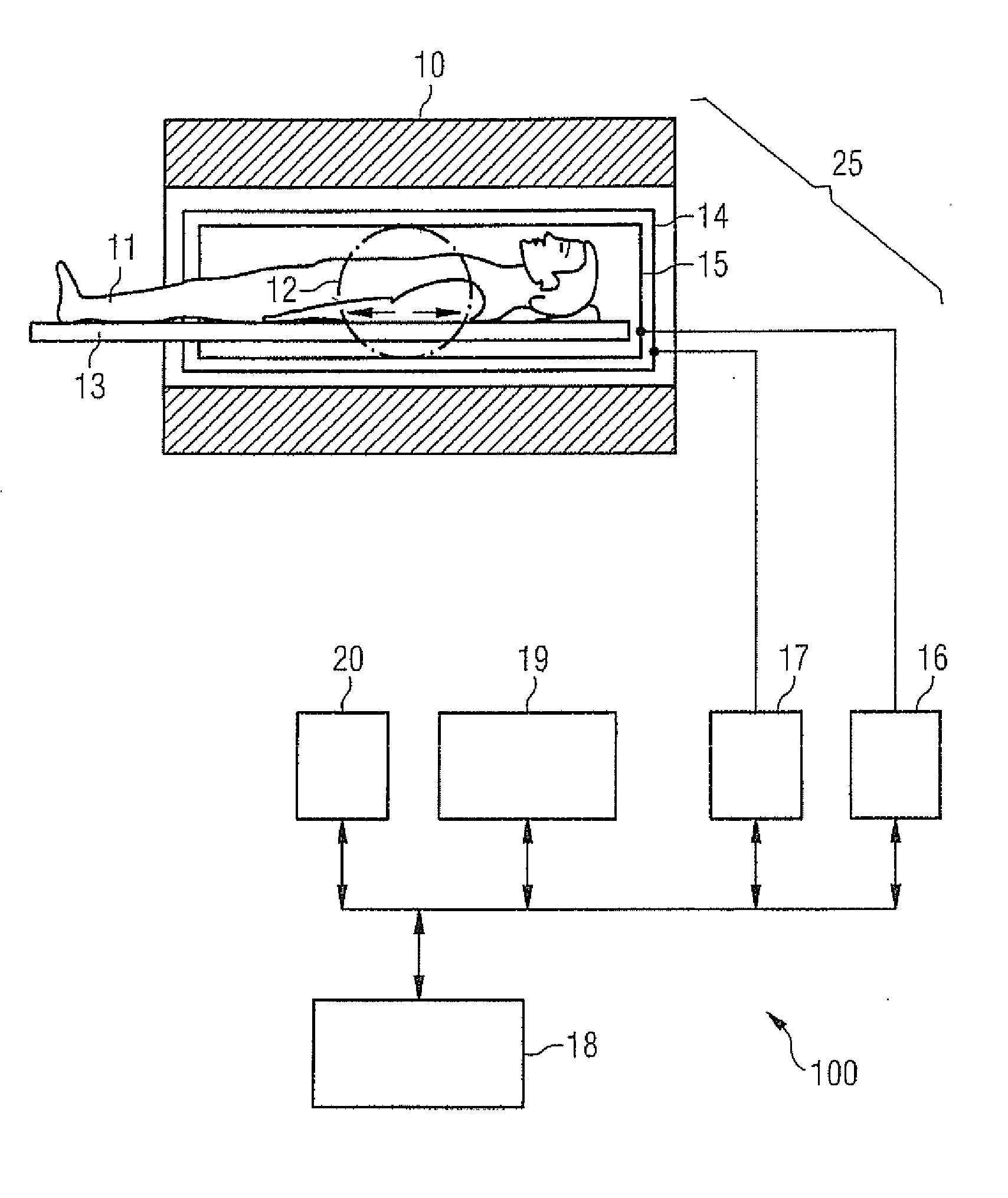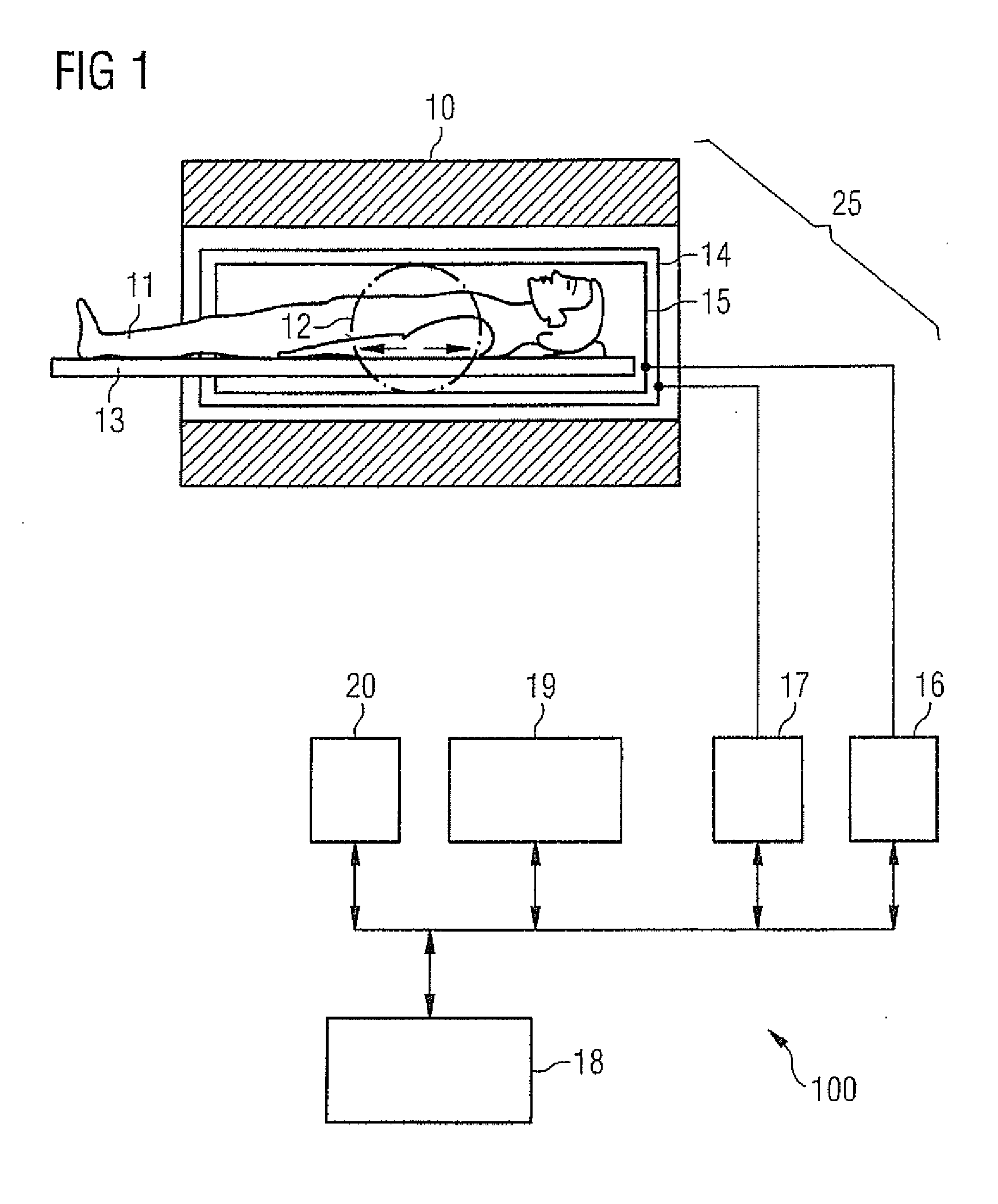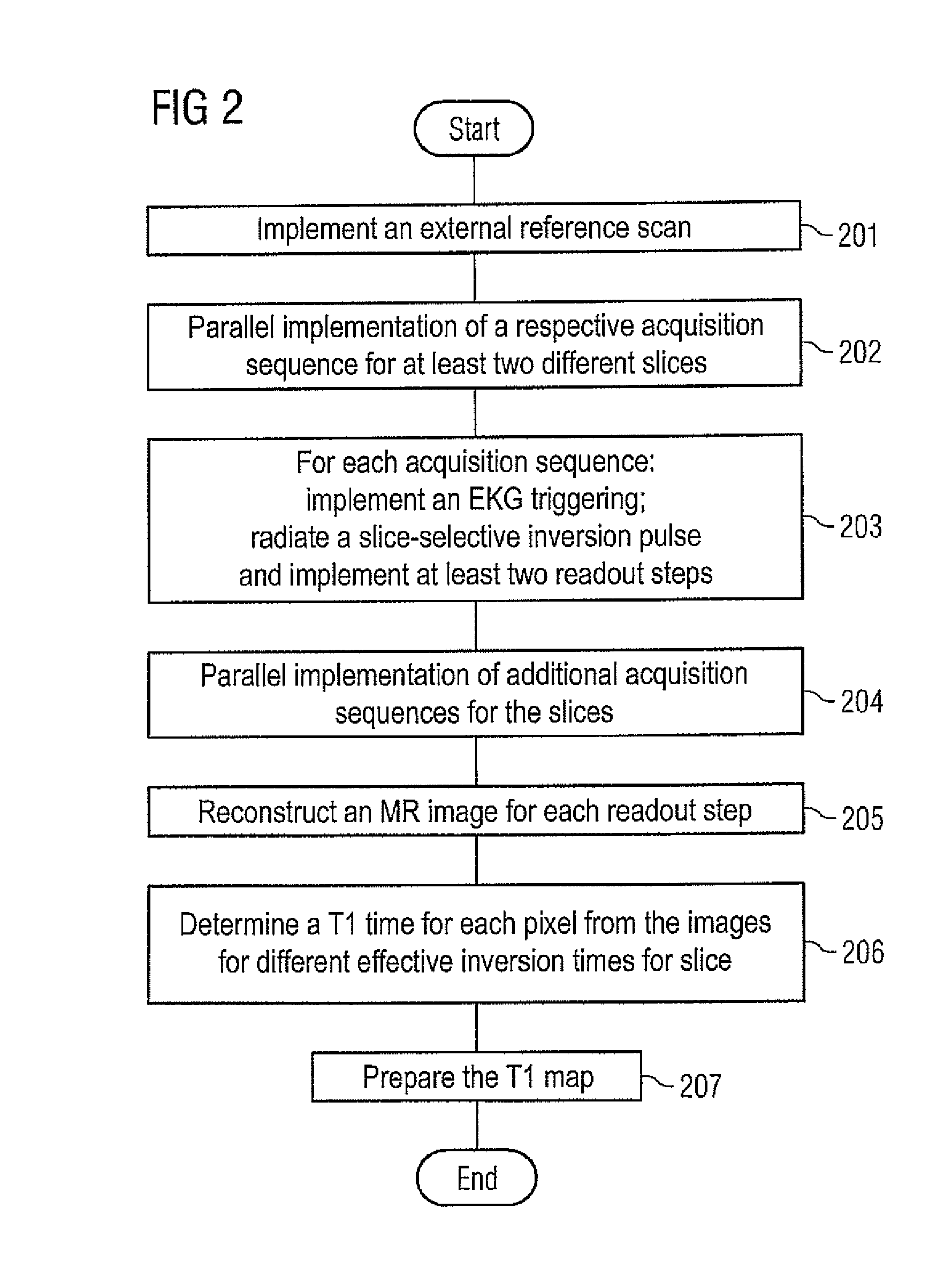Method and apparatus for magnetic resonance imaging to create t1 maps
a magnetic resonance imaging and t1 map technology, applied in the field of magnetic resonance imaging, can solve the problems of inability to use conventional methods for t1/b> quantification to depict cardiac muscle, inability to quantify cardiac muscle, etc., and achieve the effect of improving the accuracy of t1 maps and improving the accuracy of t1 results
- Summary
- Abstract
- Description
- Claims
- Application Information
AI Technical Summary
Benefits of technology
Problems solved by technology
Method used
Image
Examples
Embodiment Construction
[0040]FIG. 1 schematically shows a magnetic resonance system 100 which is designed to implement acquisition sequences for spatially resolved quantification of T1 relaxation times in parallel. Such a magnetic resonance system possesses a magnet 10 to generate a polarization field B0. To increase the signal-to-noise ratio, field strengths of at least 2.5 T (advantageously 3.0 T) can thereby be used. An examination subject (here an examined person 11) on a bed table 13 can be slid into the magnet, as is schematically depicted by the arrows. The MR system furthermore possesses a gradient system 14 to generate magnetic field gradients that are used for the imaging and spatial coding. To excite the polarization resulting in the basic magnetic field, a radio-frequency coil arrangement 15 is provided that radiates a radio-frequency (RF) field into the examined person 11 in order to deflect the magnetization out of the steady state. A gradient unit 17 is provided to control the magnetic fiel...
PUM
 Login to View More
Login to View More Abstract
Description
Claims
Application Information
 Login to View More
Login to View More - R&D
- Intellectual Property
- Life Sciences
- Materials
- Tech Scout
- Unparalleled Data Quality
- Higher Quality Content
- 60% Fewer Hallucinations
Browse by: Latest US Patents, China's latest patents, Technical Efficacy Thesaurus, Application Domain, Technology Topic, Popular Technical Reports.
© 2025 PatSnap. All rights reserved.Legal|Privacy policy|Modern Slavery Act Transparency Statement|Sitemap|About US| Contact US: help@patsnap.com



